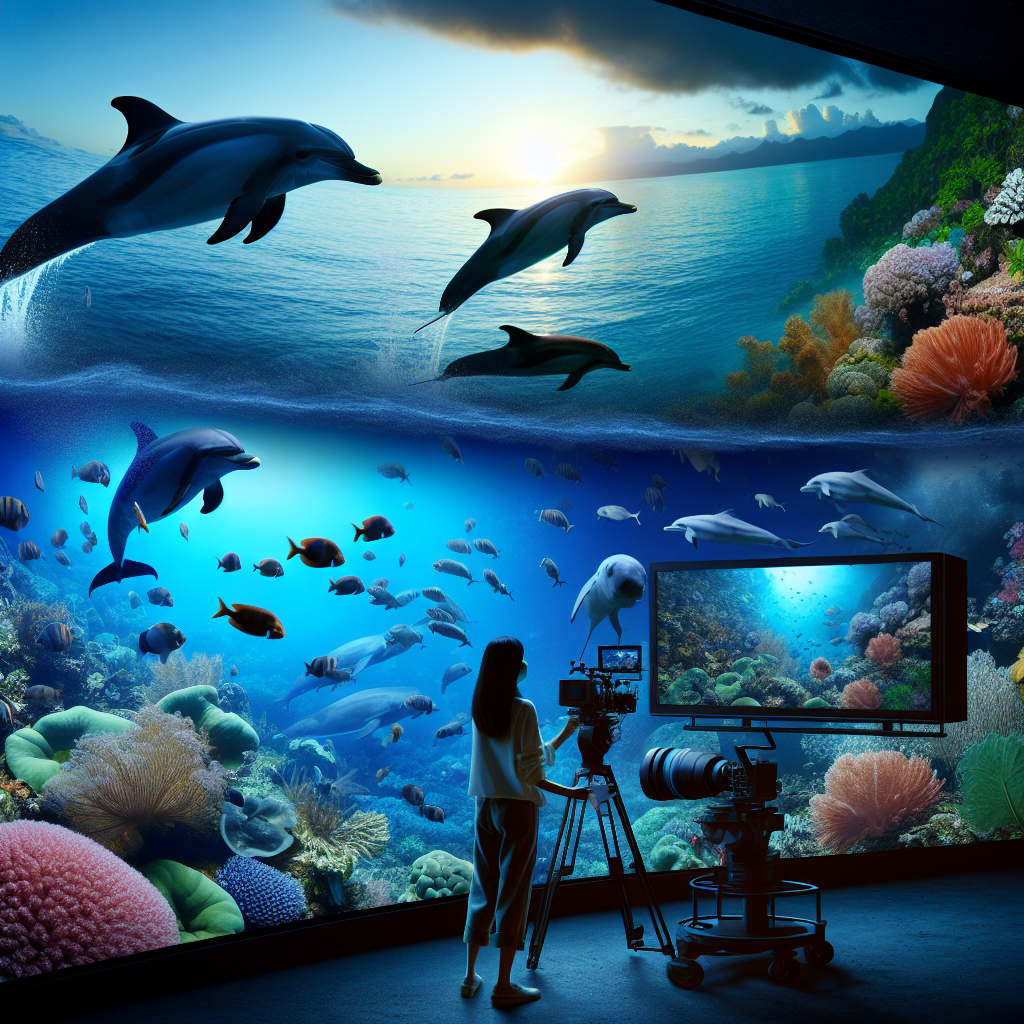From the Ocean to the Screen: Documenting Dolphin Life on Film

Dolphins, with their playful demeanor, intelligence, and complex social structures, have fascinated humans for centuries. Revered in mythology and celebrated in marine parks, these creatures embody the mystery of the ocean. In recent years, advances in technology have made it increasingly feasible to document their lives in their natural habitats, leading to a proliferation of stunning films that showcase the beauty and complexity of dolphin life. This article explores how filmmakers are capturing these remarkable animals on screen and what it means for conservation, education, and our understanding of marine ecosystems.
The Evolution of Marine Filmmaking
Marine filmmaking has transformed dramatically over the past few decades. In the past, capturing underwater footage relied heavily on bulky equipment that was often difficult to maneuver and prone to malfunction. However, the advent of compact, high-definition cameras, drones, and remote-operated vehicles (ROVs) has changed the landscape of underwater cinematography. Filmmakers can now follow dolphins over extended periods, documenting their behaviors, interactions, and hunting strategies with unprecedented clarity.
Filmmakers such as Jacques Cousteau paved the way for marine documentaries, but modern innovators are taking this legacy further. Productions like "The Cove" and Disney’s "Dolphin Reef" present dolphins in both captivating narratives and stark realities, spurring audiences to engage with issues of conservation and ecological balance.
A Glimpse into Dolphin Life
Dolphins exhibit a rich tapestry of behaviors that can be both enthralling and educational. Through film, we gain insights into their social structures, communication methods, and migratory patterns. Movies such as "Blackfish" have ignited discussions about the ethics of keeping dolphins in captivity, shedding light on their complex emotional lives and social bonds.
Documentary filmmakers, like those behind the acclaimed series "Our Planet," capture unforgettable sequences of dolphins hunting cooperatively, playing with seaweed, and even helping other species like humans in fishing. These films highlight the dolphins’ intelligence and emotionality, inviting viewers to appreciate them as sentient beings rather than mere entertainers.
The Role of Technology in Research and Conservation
Technology plays an essential role in both documenting dolphin life and informing conservation efforts. Biologists and marine researchers now utilize drones to conduct aerial surveys of dolphin populations, while hydrophones record their vocalizations. This combination of visual and auditory data helps scientists understand the impacts of noise pollution, climate change, and human activities on dolphin behavior and well-being.
Likewise, films produced with a conservation focus, like "Mission Blue," seek to raise awareness about marine protected areas and the threats dolphins face, including habitat loss, pollution, and overfishing. These documentaries often incorporate calls to action, encouraging viewers to support organizations dedicated to marine preservation and to foster a deeper connection with the ocean.
Engaging Audiences and Influencing Change
The impact of dolphin documentaries extends beyond mere entertainment—it can be a powerful catalyst for change. As audiences watch stunning visuals of dolphins in their natural habitat, many find themselves moved to take action. Documentaries have been shown to increase public awareness and empathy, leading to higher levels of activism regarding climate change, marine conservation, and ethical considerations in wildlife tourism.
For instance, awareness campaigns stemming from film screenings can lead to initiatives advocating for the protection of marine reserves, stricter regulations on fishing, and community engagement in monitoring dolphin populations. Through captivating storytelling, filmmakers have the ability to inspire both individual and collective action.
The Future of Dolphin Documentaries
As we gaze into the horizon of marine filmmaking, the future appears bright. With advances in filmmaking technologies such as 360-degree cameras and virtual reality experiences, audiences could soon immerse themselves in the underwater world of dolphins, experiencing their lives as if they were swimming alongside them. This immersive approach has the potential to deepen empathy and understanding, creating advocates for marine conservation in viewers both young and old.
Moreover, as more filmmakers and scientists collaborate, we can anticipate even more robust narratives that intertwine storytelling with scientific rigor. By highlighting the importance of dolphins in marine ecosystems and emphasizing the interconnectedness of all life, filmmakers can continue to play a crucial role in shaping public perception and policy.
Conclusion
From the ocean to the screen, the journey of documenting dolphin life continues to evolve, driven by technological innovation and a commitment to conservation. As filmmakers share the stunning realities of these intelligent creatures, they play an invaluable role in fostering an appreciation for the complexities of marine life. By engaging audiences and promoting awareness, these documentaries serve not only to celebrate dolphins but also to inspire a collective responsibility for the health of our oceans and all of its inhabitants. As we look to the future, the ongoing narration of dolphin life on film will undoubtedly remain a critical element of the effort to protect our planet’s marine environments.